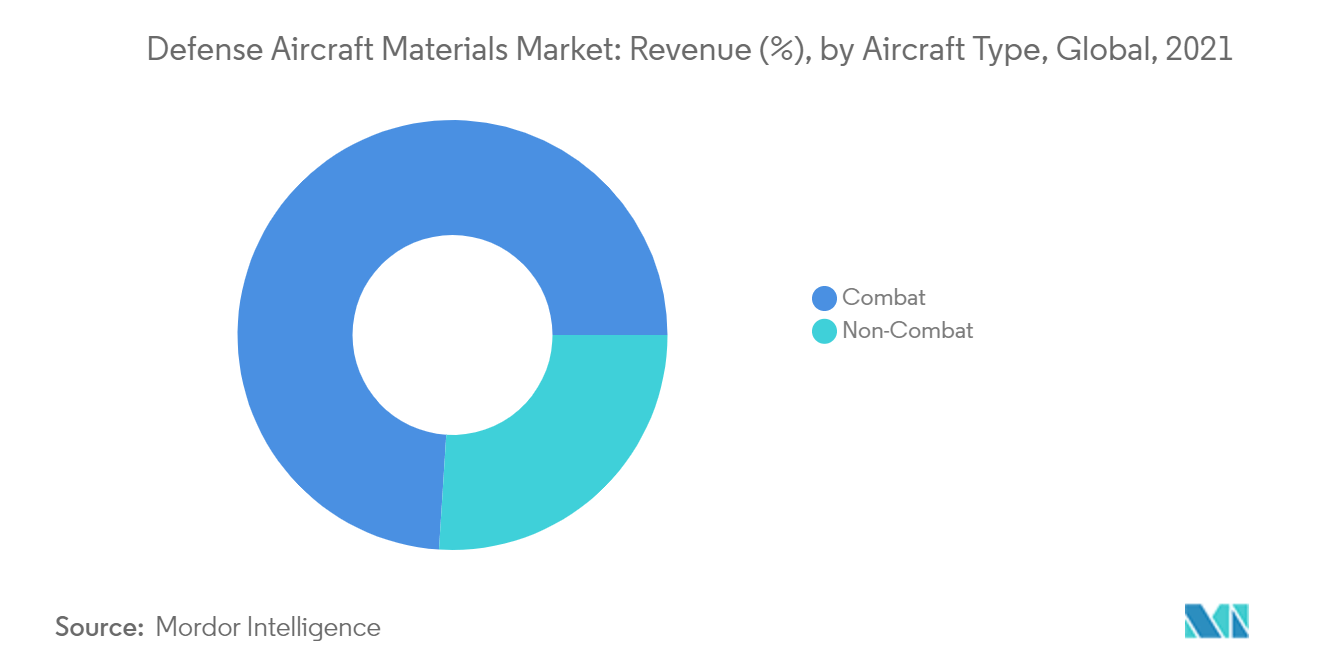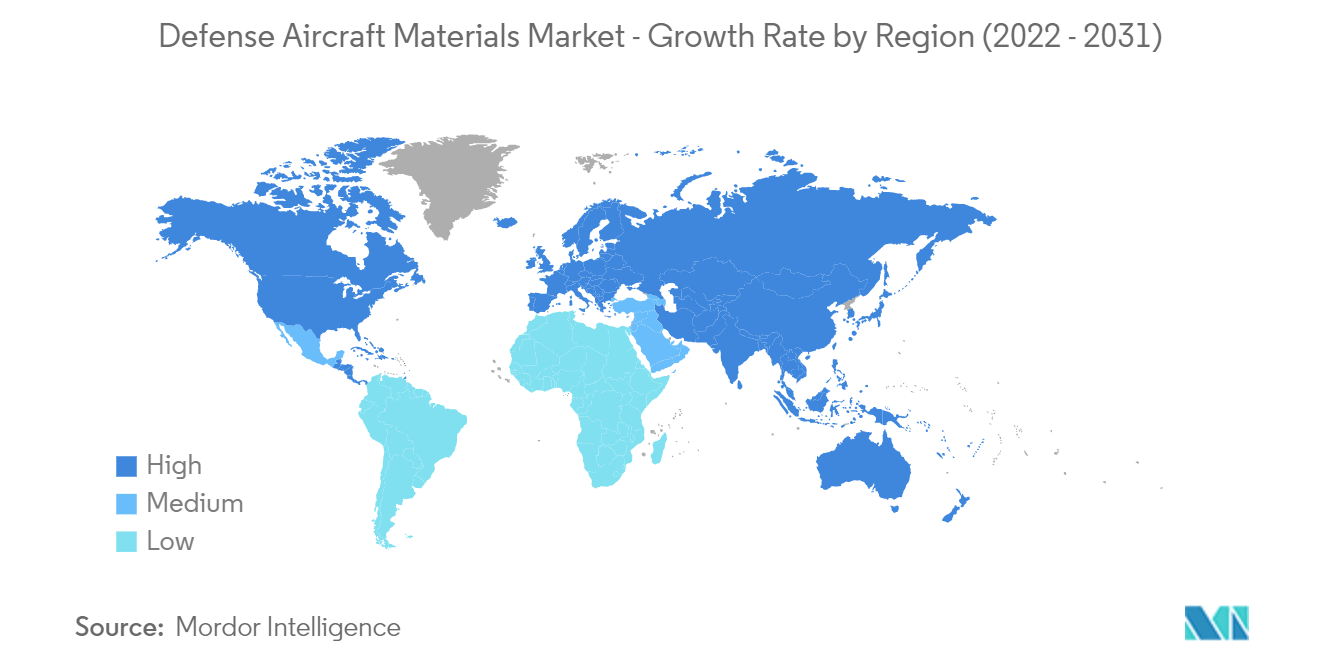Market Trends of Defense Aircraft Materials Industry
This section covers the major market trends shaping the Defense Aircraft Materials Market according to our research experts:
Combat Aircraft Segment to Dominate the Market During the Forecast Period
Combat aircraft are vital for protection against aerial threats, as they can engage in aerial warfare and ground-support missions. Global military powerhouses, such as the United States, the United Kingdom, China, France, and Japan, are vying to achieve a profound reconceptualization of modern aerial warfare techniques by fostering the indigenous development of the fifth generation and the envisioned sixth-generation combat aircraft. The F-35 Joint Strike Fighter (JSF) from Lockheed Martin is one of the most advanced combat aircraft currently in service. In 2021, the company delivered 142 F-35 fighter jets to the United States and its allies, three more than previously planned. UAE, Japan, Qatar, the UK, Singapore, and Germany are some of the countries that have either placed orders or are planning to procure combat aircraft during the forecast period. With the growing demand for various materials that could be used in developing and building next-generation aircraft, major countries have been investing in testing new materials for aircraft implementation. With the increasing threat from China, Japan has invested heavily into developing a new fighter jet F-X. This aircraft was revealed in March 2022, expected to be developed with joint partnerships with International manufacturers like Lockheed Martin and BAE Systems. This aircraft is manufactured by Mitsubishi Heavy Industries and will use an extensive amount of composite materials that make it lightweight while being resistant to extreme working conditions. The aircraft will be the most powerful aircraft to date from Japan and is expected to first fly by 2035, significantly improving the potential for high growth in demand for composite materials during the forecast period.

North America to Continue its Dominance in the Market
North America region currently dominates the market and is anticipated to continue its dominance over the market majorly due to the robust military aircraft procurement plans of the United States. The country is currently the largest military spender in the world. According to the Stockholm International Peace Research Institute (SIPRI), the US spent USD 801 billion on its military in 2021, valued at approximately 3.5% of its GDP, which accounted for about 38% of the global military expenditure. Furthermore, the revised budget estimates for 2022 amounted to USD 782 billion, a 5.6% increase over the 2021 budget estimates. The budget earmarks about USD 15.7 billion for the Air Force's aircraft procurements. Furthermore, the FY 2023 budget request of the Air Force is approximately USD 169.5 billion dollars, of which USD 18.5 billion is sought for aircraft procurements. Composite material research has also been on the high, owing to the demand for lightweight and efficient materials. As a result, OEM partnerships with component providers have also been on the rise, to bring new lightweight and efficient components. For instance, in April 2021, Continuous Composites successfully completed the Air Force Research Laboratory's two-year Wing Structure Design for Manufacturing (WiSDM) contract through Lockheed Martin to manufacture a Low Cost Attritable Aircraft (LCAA) wing. This will greatly reduce the weight of the wing, improving speed and efficiency of the aircraft. On the other hand, Canada has been developin new materials for flight body. For instance, in April 2022, Raytheon Technologies' Collins Aerospace created a new business unit that will allow the company to build critical parts for next-generation military aircraft and hypersonic weapons. The unit will work towards developing new types of composite materials that could be used to make futuristic aircrafts.

